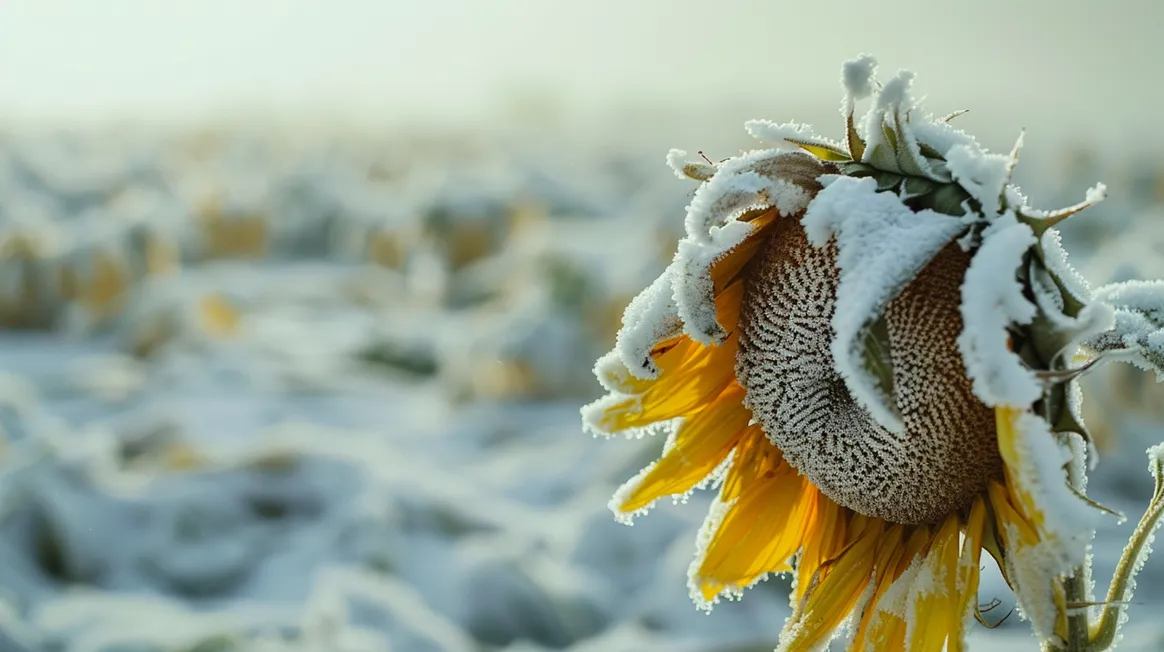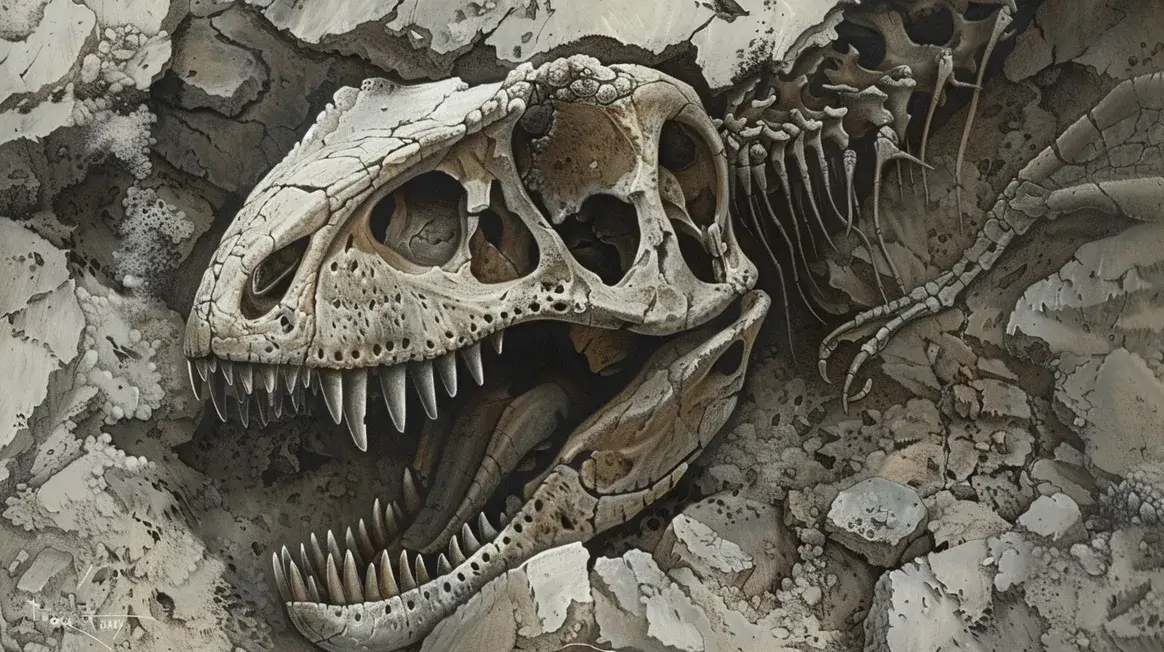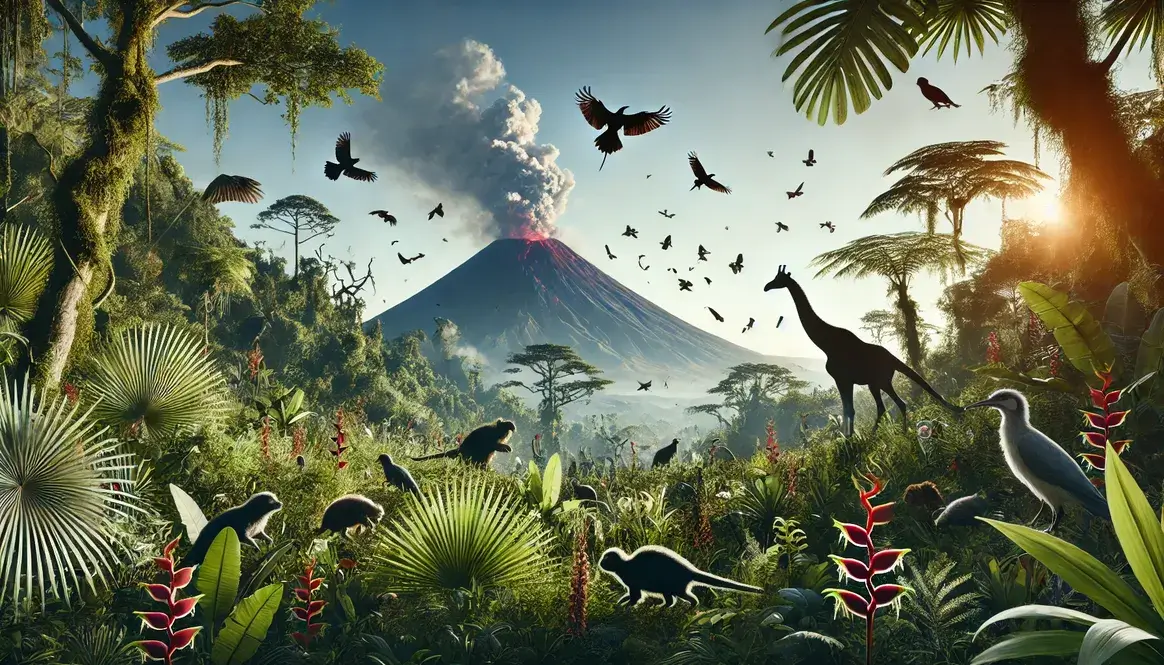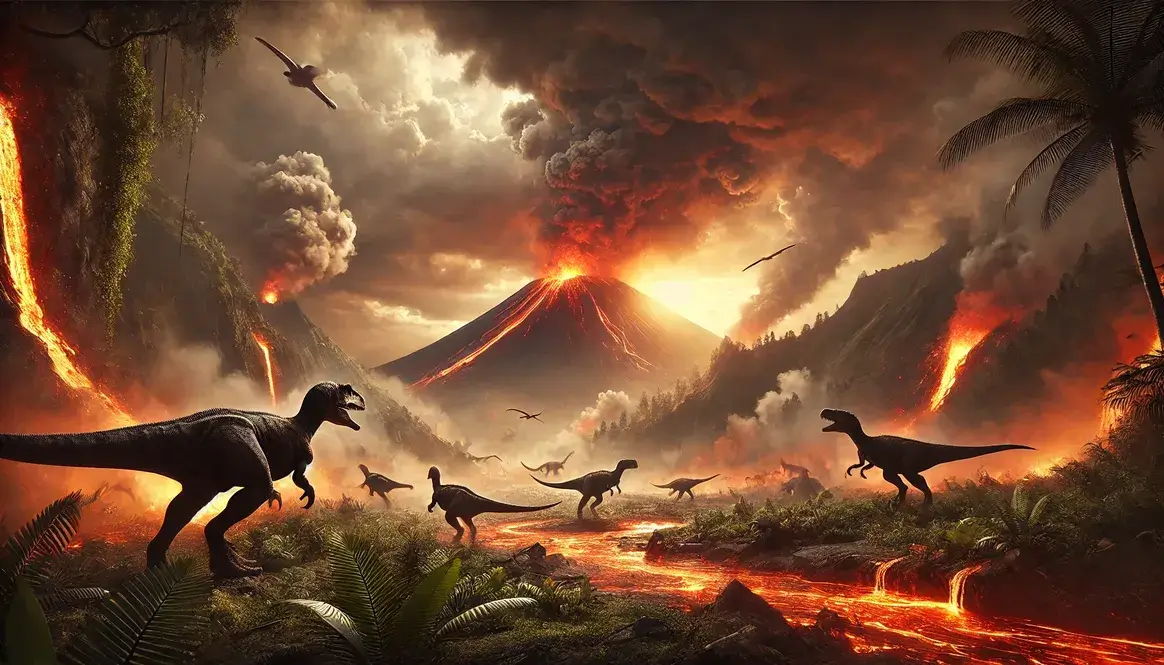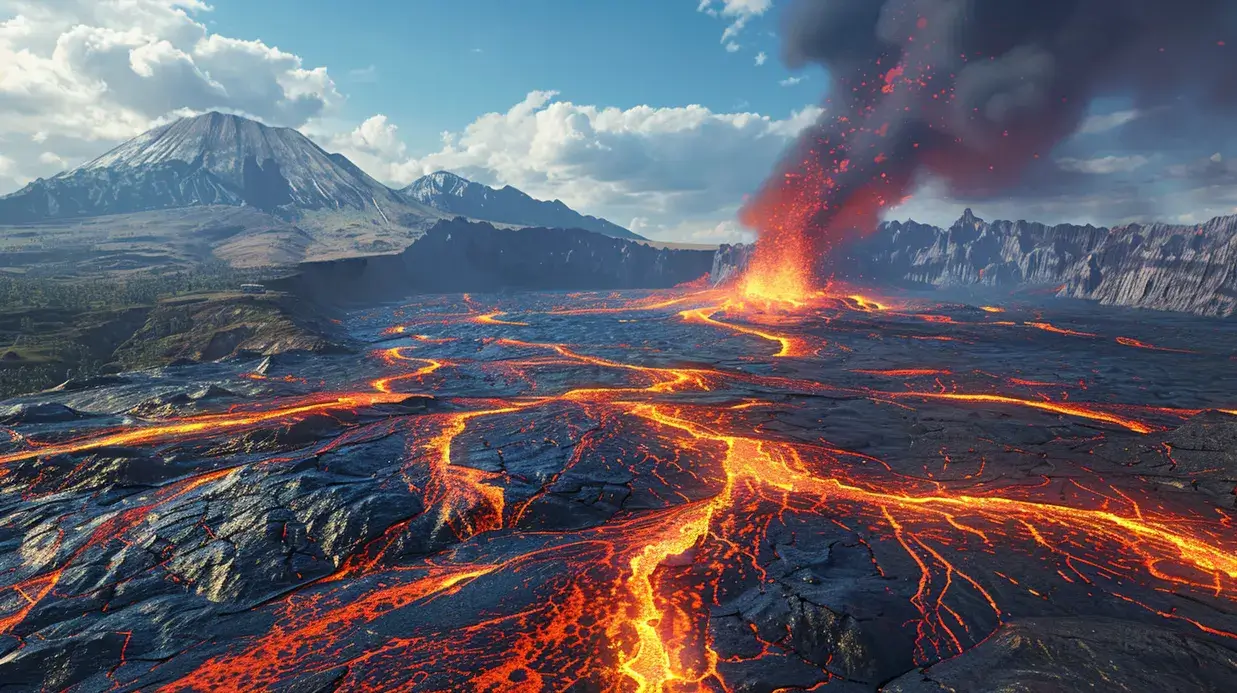A volcanic winter is a temporary but significant cooling of Earth’s surface temperature caused by volcanic eruptions. This phenomenon occurs when massive amounts of volcanic ash and gases, particularly sulfur dioxide, are ejected into the atmosphere. Unlike typical weather changes, volcanic winters can affect the entire planet and last for months or even years.
Volcanic winters stand out from other climate events due to their rapid onset and wide-reaching effects. While climate change occurs over long periods, a volcanic winter can begin within weeks of a major eruption. Another key difference is the cause: volcanic winters result directly from volcanic activity, unlike phenomena such as El Niño, which are caused by ocean-atmosphere interactions.
| Aspect of Volcanic Winter | Key Information |
|---|---|
| Definition | A period of global cooling caused by volcanic eruptions |
| Duration | Can last for months to years |
| Primary Cause | Sulfur dioxide and ash injected into the atmosphere |
| Main Effect | Reduced sunlight reaching Earth’s surface |
| Temperature Impact | Global cooling, particularly in summer months |
| Additional Effects | Altered weather patterns and reduced crop yields |
| Historical Example | “Year Without a Summer” (1816) after Mount Tambora eruption |
What is a volcanic winter and how does it happen?
A volcanic winter happens when a powerful volcanic eruption sends enormous amounts of ash and gases high into the atmosphere. The most important of these gases is sulfur dioxide. Once in the upper atmosphere, sulfur dioxide combines with water vapor to form tiny droplets called sulfuric acid aerosols. These aerosols spread around the Earth, forming a haze that reflects sunlight back into space.
The process unfolds like this:
- A large volcano erupts violently.
- Ash and gases are thrust high into the atmosphere.
- Sulfur dioxide reacts with water vapor, creating sulfuric acid aerosols.
- These aerosols spread globally, reflecting sunlight.
- Less sunlight reaches Earth’s surface, causing temperatures to drop.
Not all volcanic eruptions can trigger a volcanic winter. The eruptions most likely to cause this effect are those rated as 6 or higher on the Volcanic Explosivity Index (VEI). These eruptions are powerful enough to inject material into the stratosphere, where it can remain for long periods and spread globally.
| Volcanic Explosivity Index (VEI) | Plume Height | Eruption Volume | Frequency | Example |
|---|---|---|---|---|
| 6 | 25-30 km | 10-100 km³ | 1 per century | Mount Pinatubo, 1991 |
| 7 | 30-35 km | 100-1000 km³ | 1 per millennium | Mount Tambora, 1815 |
| 8 | >35 km | >1000 km³ | 1 per 10,000-100,000 years | Yellowstone Caldera, 640,000 years ago |
The larger and more sulfur-rich the eruption, the more likely it is to cause a volcanic winter. For instance, the 1815 eruption of Mount Tambora in Indonesia, which led to the infamous “Year Without a Summer” in 1816, was a VEI 7 event. This eruption demonstrates how volcanic activity can alter Earth’s climate on a global scale, causing widespread cooling and disrupting weather patterns around the world.
Major components of a volcanic winter
A volcanic winter involves several interconnected elements that work together to create a global cooling effect. Let’s explore these components in detail.
Atmospheric changes
When a massive volcanic eruption occurs, it releases a cocktail of gases and particles into the atmosphere. The main players in this mix are:
- Sulfur dioxide (SO2)
- Ash particles
- Water vapor
- Carbon dioxide (CO2)
While all these components contribute to atmospheric changes, sulfur dioxide is the star of the show when it comes to volcanic winters. Here’s why:
Sulfur dioxide reacts with water vapor in the atmosphere to form sulfuric acid aerosols. These tiny droplets are excellent at reflecting sunlight back into space. As these aerosols spread around the globe, they create a haze in the stratosphere that acts like a giant sunshade for Earth.
The ash from volcanic eruptions also plays a role, but its effects are usually short-lived. Most ash falls out of the atmosphere within days or weeks. However, the finest ash particles can remain airborne for months, adding to the cooling effect.
Temperature drops
The reflection of sunlight by sulfuric acid aerosols leads to a decrease in the amount of solar energy reaching Earth’s surface. This results in a global cooling effect, which is the hallmark of a volcanic winter.
The extent of temperature drop can vary, but typically ranges from 0.5°C to 1°C globally. While this might not sound like much, even small changes in global temperature can have significant impacts on weather patterns and ecosystems.
The duration of these temperature changes depends on the size of the eruption and the amount of sulfur dioxide released. For most large eruptions, the cooling effects last about 1-3 years. However, in extreme cases like the Deccan Traps eruptions, which occurred over thousands of years, the cooling effects could have been much more prolonged.
Altered weather patterns
Volcanic winters don’t just make things cooler; they shake up weather patterns worldwide. Here’s how:
- Precipitation changes: The cooling effect can lead to reduced evaporation from oceans and less water vapor in the atmosphere. This often results in decreased rainfall in many areas, particularly in tropical regions.
- Wind pattern shifts: Temperature differences drive wind patterns. When volcanic aerosols cool some areas more than others, it can alter these patterns. For example, some research suggests that large eruptions can weaken monsoon circulations.
- Ocean current impacts: While the effects on ocean currents are complex, volcanic winters can influence ocean temperatures and circulation patterns. These changes can further impact global climate and marine ecosystems.
It’s important to note that while volcanic winters generally cause cooling, some regions might experience temporary warming due to changes in atmospheric circulation. This showcases the complexity of Earth’s climate system and the far-reaching effects of major volcanic eruptions.
Historical examples of volcanic winters
Throughout Earth’s history, there have been several notable volcanic winters that have left their mark on climate and human societies. Let’s explore two of the most famous examples.
The Year Without a Summer (1816)
In 1816, people around the world experienced a year of bizarre and extreme weather. This event, known as “The Year Without a Summer,” was caused by the massive eruption of Mount Tambora in Indonesia the previous year.
Cause: Mount Tambora eruption
Mount Tambora erupted in April 1815, ejecting an enormous amount of volcanic material into the atmosphere:
- 150 cubic kilometers of ash and rocks
- 60 megatons of sulfur
This eruption was so powerful that it changed the color of the sky in many parts of the world for months afterward.
Global effects and societal impacts
The Year Without a Summer had far-reaching consequences:
- Temperature drop: Global temperatures fell by about 0.5°C, with some areas experiencing much larger drops.
- Crop failures: In many parts of North America and Europe, summer frosts killed crops, leading to food shortages.
- Societal upheaval: The unusual weather and food scarcity caused social unrest in many countries.
- Cultural impacts: The gloomy weather inspired Mary Shelley to write “Frankenstein” during her stay in Switzerland.
- Economic effects: Food prices soared, causing hardship for many people.
This event showcases how volcanoes impact evolution of societies and cultures, not just biological species.
Laki eruption (1783)
While not as well-known as the Year Without a Summer, the eruption of Laki in Iceland in 1783 caused significant disruptions across Europe and beyond.
Impacts on Europe and beyond
The Laki eruption lasted for eight months, pumping vast amounts of sulfur dioxide and other gases into the atmosphere. This led to:
- A blue haze over much of Europe
- Unusually hot summers in Europe
- Severely cold winters in North America
- Drought in North Africa
Environmental and health consequences
The Laki eruption had severe impacts on both the environment and human health:
| Consequence | Description |
|---|---|
| Crop failures | The volcanic haze damaged crops across Europe |
| Livestock deaths | In Iceland, over 50% of cattle and 75% of sheep died |
| Human mortality | Increased death rates were observed in England and France |
| Acid rain | The sulfur emissions led to acid rain, damaging plants and corroding metals |
The Laki eruption serves as a stark reminder of how volcanic activity can have wide-ranging effects on climate, environment, and human societies. It demonstrates the potential for volcanic climate change to occur even without a full-scale volcanic winter.
These historical examples provide valuable insights into the potential impacts of future large-scale eruptions and the importance of understanding volcanic winters for both scientific research and disaster preparedness.
Volcanic winters and mass extinctions
Volcanic winters have played a significant role in shaping Earth’s history, particularly during mass extinction events. Let’s examine two major extinction events where volcanic activity, and potentially volcanic winters, played a crucial role.
The Permian-Triassic extinction event
The Permian-Triassic (P-T) extinction, often called “The Great Dying,” was the most severe mass extinction in Earth’s history. It occurred about 252 million years ago and wiped out nearly 95% of marine species and 70% of terrestrial vertebrate species.
Evidence linking volcanoes to this major extinction
Scientists have found compelling evidence connecting this extinction to massive volcanic eruptions in Siberia:
- Timing: The main phase of volcanism coincides closely with the extinction event.
- Mercury levels: High mercury concentrations in rocks from this period indicate intense volcanic activity.
- Carbon isotopes: Changes in carbon isotope ratios suggest a large release of greenhouse gases.
- Acid rain evidence: Malformed plant spores indicate widespread acid rain, a common effect of volcanic eruptions.
Scale and duration of volcanic activity
The volcanic activity responsible for the P-T extinction was truly enormous:
- Area affected: The eruptions covered an area of over 7 million square kilometers (larger than Australia).
- Volume of lava: Estimates suggest over 4 million cubic kilometers of lava were erupted.
- Duration: The main phase of eruptions lasted for about 500,000 years, with intense activity spanning about 60,000 years.
This prolonged period of intense volcanism likely triggered a severe volcanic winter, followed by extreme global warming due to greenhouse gas emissions. The combination of these climate extremes, along with ocean acidification and ozone depletion, created a perfect storm for mass extinction.
End-Cretaceous extinction debate
The extinction event at the end of the Cretaceous period, which wiped out the non-avian dinosaurs about 66 million years ago, has been the subject of intense scientific debate. While an asteroid impact is widely accepted as the primary cause, volcanism at the Deccan Traps in India may have played a significant role.
Potential role of Deccan Traps volcanism
The Deccan Traps eruptions were massive, occurring over a long period:
- Timing: The main phase of eruptions occurred between 66.3 and 65.5 million years ago.
- Volume: They produced over 1.3 million cubic kilometers of lava.
- Area: The lava flows covered an area of 500,000 square kilometers.
These eruptions could have caused significant climate effects, including:
- Global cooling due to sulfur aerosols (volcanic winter)
- Subsequent warming from CO2 emissions
- Acid rain and ocean acidification
Interaction with asteroid impact effects
The relationship between Deccan Traps volcanism and the asteroid impact is complex:
| Scenario | Description |
|---|---|
| Volcanism weakened ecosystems | Long-term volcanic effects may have stressed global ecosystems, making them more vulnerable to the asteroid impact |
| Impact triggered more volcanism | Some research suggests the asteroid impact may have intensified Deccan Traps eruptions |
| Combined effects | The asteroid impact and volcanism may have worked together to cause the extinction |
While the debate continues, many scientists now believe that the Deccan Traps eruptions played a significant role in the end-Cretaceous extinction, either by weakening ecosystems before the impact or by exacerbating its effects afterward.
Understanding the role of volcanic winters in past mass extinctions provides valuable insights into the potential impacts of future large-scale volcanic events and their implications for global climate and biodiversity.
Volcanic winter vs. impact winter
While both volcanic winters and impact winters can cause global cooling, they have distinct characteristics and effects. Understanding these differences is crucial for interpreting past climate events and preparing for potential future scenarios.
Key differences in cause and duration
Volcanic winters and impact winters are triggered by very different events:
- Volcanic winter:
- Caused by large volcanic eruptions
- Can occur multiple times in human history
- May last for months to years, depending on eruption size
- Impact winter:
- Caused by large asteroid or comet impacts
- Extremely rare (once every tens of millions of years)
- Typically shorter duration, but potentially more intense
The duration of these events is largely determined by how long the sun-blocking particles remain in the atmosphere. Volcanic aerosols can persist in the stratosphere for years, while impact-generated dust usually settles more quickly.
Comparing effects on climate and ecosystems
Both types of winters can have severe consequences for global climate and ecosystems, but there are some key differences:
| Aspect | Volcanic Winter | Impact Winter |
|---|---|---|
| Initial temperature drop | Gradual (weeks to months) | Rapid (days to weeks) |
| Geographic extent | Can be regional or global | Usually global |
| Effect on ozone layer | Potential depletion | Severe damage likely |
| Ocean acidification | Gradual increase | Rapid, severe increase |
Volcanic winters tend to have more varied regional effects, as wind patterns can concentrate aerosols in certain areas. Impact winters, on the other hand, typically cause more uniform global cooling.
The effects on ancient life can be profound in both cases. However, the rapid onset of an impact winter might leave less time for organisms to adapt or migrate, potentially leading to more sudden and severe ecosystem disruptions.
Potential for compounded effects
In some cases, volcanic and impact winters could occur in close succession or even simultaneously, leading to compounded effects. This scenario has been proposed for the end-Cretaceous extinction:
- Ongoing eruptions of the Deccan Traps were already affecting global climate.
- The asteroid impact occurred, causing a severe impact winter.
- The impact may have triggered more intense volcanic activity.
- The combined effects of volcanism and impact created a “one-two punch” for life on Earth.
This compounded scenario could explain the severity and complexity of the end-Cretaceous extinction event. It demonstrates how different climate-altering phenomena can interact, potentially leading to more severe and long-lasting effects than either would cause alone.
Understanding these differences and potential interactions is crucial for interpreting the geological record and assessing potential future risks. While we can’t prevent large asteroid impacts or massive volcanic eruptions, knowledge of their effects can help us better prepare for and mitigate potential consequences.
Studying volcanic winters
Understanding volcanic winters requires a multidisciplinary approach, combining various scientific methods and advanced computer modeling. Let’s explore how researchers investigate these climate-altering events.
Scientific methods
Scientists use several techniques to study volcanic winters, each providing unique insights into past events and their impacts.
Ice core analysis
Ice cores are like time capsules, preserving information about past climates and volcanic eruptions. Here’s how they help in studying volcanic winters:
- Sulfate layers: Volcanic eruptions leave distinct sulfate layers in ice cores.
- Acidity: The acidity of ice layers can indicate volcanic activity.
- Ash particles: Tiny volcanic ash particles can be found in ice cores.
- Temperature records: Changes in oxygen isotopes in the ice reveal past temperature fluctuations.
By analyzing these factors, scientists can identify past volcanic winters and assess their severity and duration.
Tree ring studies
Trees are natural record-keepers, and their growth rings can tell us a lot about past climate conditions:
- Narrow rings often indicate cooler temperatures or drought conditions.
- Frost damage in rings can suggest unusually cold summers.
- Chemical analysis of rings can reveal environmental changes.
Tree ring studies have been crucial in understanding events like the “Year Without a Summer” in 1816.
Geological evidence
Rocks and sediments also hold clues about past volcanic winters:
- Volcanic deposits: The size and extent of ash layers can indicate eruption magnitude.
- Marine sediments: Changes in microfossil assemblages can reflect climate shifts.
- Lake sediments: Annual layers (varves) can preserve evidence of volcanic impacts on local environments.
Computer modeling
Modern technology allows scientists to simulate volcanic winters and predict their potential effects more accurately than ever before.
Simulating volcanic winter scenarios
Computer models of volcanoes and climate systems help researchers understand the complex interactions that occur during a volcanic winter. These models consider factors such as:
- Atmospheric circulation patterns
- Ocean heat transport
- Aerosol distribution and lifetime
- Radiative forcing changes
By inputting data from past eruptions, scientists can recreate historical volcanic winters and compare model results with geological evidence. This helps refine the models and improves our understanding of these events.
Predicting potential future events
While we can’t predict exactly when a volcano will erupt, computer models can help us prepare for potential future volcanic winters. These models can:
- Estimate the global impact of hypothetical eruptions of different sizes and locations.
- Assess potential effects on agriculture, weather patterns, and ecosystems.
- Help develop mitigation strategies for different scenarios.
For example, models might predict how a VEI 7 eruption (similar to the 1815 Tambora eruption) in different parts of the world could affect global temperatures, precipitation patterns, and crop yields.
By combining these various scientific methods and advanced modeling techniques, researchers continue to deepen our understanding of volcanic winters. This knowledge not only helps us interpret Earth’s past but also prepares us for potential future events that could significantly impact our climate and society.
Potential future volcanic winters
As our understanding of volcanic winters grows, scientists are increasingly focused on the possibility of future events and their potential impacts on our modern world. This knowledge is crucial for developing effective preparedness and mitigation strategies.
Likelihood of major eruptions causing volcanic winters
While predicting specific volcanic eruptions remains challenging, we can assess the general likelihood of events capable of triggering a volcanic winter:
- VEI 6 eruptions (like the 1991 Mount Pinatubo eruption) occur roughly once per century.
- VEI 7 eruptions (like the 1815 Mount Tambora eruption) happen approximately once every 500 to 1000 years.
- VEI 8 eruptions (super-eruptions) are extremely rare, occurring once every 50,000 to 100,000 years.
Given these frequencies, it’s likely that we’ll experience at least one eruption capable of causing a volcanic winter within the next few centuries. Some volcanoes that scientists monitor closely due to their potential for large eruptions include Yellowstone (USA), Toba (Indonesia), and Campi Flegrei (Italy).
Possible global impacts in the modern world
A future volcanic winter could have wide-ranging effects on our interconnected global society:
- Agriculture: Reduced temperatures and altered precipitation patterns could lead to crop failures and food shortages.
- Energy demand: Cooler temperatures might increase energy consumption for heating.
- Transportation: Ash clouds could disrupt air travel on a global scale.
- Health: Respiratory issues from ash and aerosols could affect millions.
- Economy: The combined effects could trigger a global economic downturn.
- Climate: Temporary cooling might complicate efforts to understand and mitigate long-term climate change.
The impact on ancient ecosystems from past events gives us clues about potential future effects, but our modern world presents unique vulnerabilities and resiliences.
Preparedness and mitigation strategies
Preparing for a potential volcanic winter involves efforts at various levels:
| Level | Strategies |
|---|---|
| Global | – Improve volcanic monitoring systems – Enhance climate modeling capabilities – Develop international response plans |
| National | – Stockpile food and essential supplies – Create emergency agricultural plans – Prepare for potential energy crises |
| Local | – Educate communities about volcanic hazards – Develop local resilience plans – Practice emergency responses |
| Individual | – Maintain emergency supplies – Stay informed about volcanic activity – Support scientific research and preparedness efforts |
One key aspect of preparedness is improving our ability to forecast volcanic eruptions. While we can’t prevent eruptions, early warning could allow for better preparation and mitigation of impacts.
Mitigation strategies might include:
- Developing climate engineering techniques to counter aerosol cooling effects.
- Investing in indoor and greenhouse farming to protect food production.
- Improving air filtration systems to protect against ash and aerosols.
- Diversifying energy sources to ensure stable power supply.
By studying past volcanic winters and preparing for future possibilities, we can work to reduce the potential impacts of these dramatic climate events on our global society. This preparation not only helps protect us from volcanic winters but also improves our resilience to other large-scale climate disruptions.

